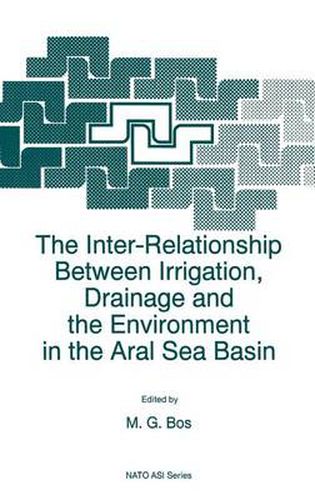Readings Newsletter
Become a Readings Member to make your shopping experience even easier.
Sign in or sign up for free!
You’re not far away from qualifying for FREE standard shipping within Australia
You’ve qualified for FREE standard shipping within Australia
The cart is loading…






This title is printed to order. This book may have been self-published. If so, we cannot guarantee the quality of the content. In the main most books will have gone through the editing process however some may not. We therefore suggest that you be aware of this before ordering this book. If in doubt check either the author or publisher’s details as we are unable to accept any returns unless they are faulty. Please contact us if you have any questions.
The irrigated area in the Aral Sea basin totals about 7.5 million ha. Part of the water supplied to this area is consumed by the irrigated crops; the remainder drains into the groundwater basin, downstream depressions, or back into the rivers. But the water accumulates salts and chemicals during its period of use, causing environmental problems which this book discusses. The natural discharge capacity of the groundwater basin is inadequate to handle the unconsumed irrigation water, leading to a rise in the groundwater table and to waterlogging. In (semi-) arid zones, this waterlogging triggers a soil salinity problem, resulting in poorer crop yields. The problem is solved by artificially increasing the discharge capacity and lowering the groundwater table. Since the lands surrounding the Aral Sea have become independent republics, a number of missions have reported on the water-related environmental problems in the basin. Such reports have contributed to a plan of action for solving or alleviating some of the problems identified, high priority being accorded to improving the irrigation efficiency, artificial drainage, and the related environmental effects.
$9.00 standard shipping within Australia
FREE standard shipping within Australia for orders over $100.00
Express & International shipping calculated at checkout
This title is printed to order. This book may have been self-published. If so, we cannot guarantee the quality of the content. In the main most books will have gone through the editing process however some may not. We therefore suggest that you be aware of this before ordering this book. If in doubt check either the author or publisher’s details as we are unable to accept any returns unless they are faulty. Please contact us if you have any questions.
The irrigated area in the Aral Sea basin totals about 7.5 million ha. Part of the water supplied to this area is consumed by the irrigated crops; the remainder drains into the groundwater basin, downstream depressions, or back into the rivers. But the water accumulates salts and chemicals during its period of use, causing environmental problems which this book discusses. The natural discharge capacity of the groundwater basin is inadequate to handle the unconsumed irrigation water, leading to a rise in the groundwater table and to waterlogging. In (semi-) arid zones, this waterlogging triggers a soil salinity problem, resulting in poorer crop yields. The problem is solved by artificially increasing the discharge capacity and lowering the groundwater table. Since the lands surrounding the Aral Sea have become independent republics, a number of missions have reported on the water-related environmental problems in the basin. Such reports have contributed to a plan of action for solving or alleviating some of the problems identified, high priority being accorded to improving the irrigation efficiency, artificial drainage, and the related environmental effects.